I am sure you have pondered the thorny issue of ebook prices.
I am almost certain you have sat in front of that Kindle Digital Publishing screen, staring at the ebook prices boxes, and asked yourself, “How much should I charge?”
After all if you charge too much then no one will buy your book, but too little and you will not make enough to cover the cost of editing and cover design…
In this article I will explain the thinking we used when deciding the price for our recently published charity book called 100 RPM.
I will delve into the options we faced, show the choice we finally made and explain the results of our decision.
I will also show how you can use the same systematic thinking we applied to determine the best price for your book.
100 RPM
This project began when BubbleCow’s co-founder, Caroline Smailes, formulated the idea of creating an ebook that would allow us to showcase the talent of new and established writers, whilst simultaneously raising money for the charity One in Four.
The concept behind the book was simple. We would ask writers to write a short story based on a song from YouTube. The best would be selected and BubbleCow would edit the book and do the digital conversion. This would just leave the cover design. This problem was solved when talented artist Becky Adams offered to hand stitch and digitally create a cover with Ifan Bates (they had created the cover for Caroline’s book Like Bees To Honey).
One final exciting development was that a friend knew 80s pop star Nik Kershaw and he agreed to write the introduction. In fact, he was really excited about the project and was more than keen to help out.
The Ebook Prices Problem
So once the book was created (that’s a story I will save for another post) we were ready to upload onto Amazon, but pricing quickly became an issue. We didn’t want to price too high and stunt sales, but we didn’t want to go too low and fail to raise the maximum amount of money.
A bit of research and we were left with two pricing options:
Low Ebook Prices
There is a lot of evidence to suggest that fiction sells best at a lower price point. The rationale is that readers are far more likely to take a chance on a low priced book, than a higher priced book.
The way the KDP works is that Amazon takes a cut of your sale price as a commission and you get to keep the rest. However, the amount they take depends on the price you charge.
Books sold for less than $2.99 have a 35% royalty payment.
Books above $2.99 have a 70% royalty payment.
Therefore if we went for a low price, then we would only receive 35% royalties from Amazon. The payoff would be that lower price books are more attractive to readers and therefore sell well. This also means that you are more likely to make significant sales and move up the charts.
The advantage of this is that once a book is in the top ten of its category, Amazon starts to suggest the book to readers buying similar books. This means that the more you sell, the more Amazon promotes you and the more potential readers see your book.
We suspected that we would need at least 100 sales a day to hit the charts and trigger Amazon’s recommendation system.
There was one other significant factor in the equation. After speaking to the charity, One in Four, it turned out that the increase in profile they would get from the book was potentially as beneficial, as the money we would raise.
Higher Ebook Prices
The second option was, therefore, to price the book above the $2.99 threshold. The reasoning being that this would allow the 70% royalty to kick in and for us to make more money per book sold.
Yet it was not that simple. All the information we could find suggested that the higher price would stunt sales. In fact, when we looked at the top ten for Short Stories and Anthologies there were only a couple of books (out of twenty) that were priced at the higher band.
This meant that though we would make more money per book, we would probably sell fewer books and reach fewer readers.
If this choice was not complex enough there was one other factor…
100 RPM has about 90 different writers in the collection. All of whom had promised to buy a copy AND promote the book to their readers. We also knew that Nik Kershaw was going to push the book via his Twitter stream.
Therefore, our guess was that we probably had about 150 sales that where independent of price. That is, we felt the ‘story’ of the book, linked with contributors’ promotional efforts would mean that these sales would happen no matter what price we opted to use.
The final point for consideration was to do with sales that were beyond our sphere of influence. In short, the initial promotion from writers, contributors and well-wishers, meant that thousands, if not tens of thousands, of people would be exposed to the book in the first couple of days.
All the evidence and feedback we could gather pointed strongly to the fact that these potential readers would not be exposed to the book’s ‘story’ (charity etc.) and would, therefore, buy on price. The lower the price, the more likely they would be to buy.
Ebook Prices Predictions
The next step was to look at some predictions and see what kind of sales (and profit) we could hope to hit. At this point, we did take some advice from a few fellow writers and a couple of traditional publishers.
The result was the following:
Lower price = $1.55 (35% royalty)
Higher price = $2.99 (70% royalty)
Lower Price
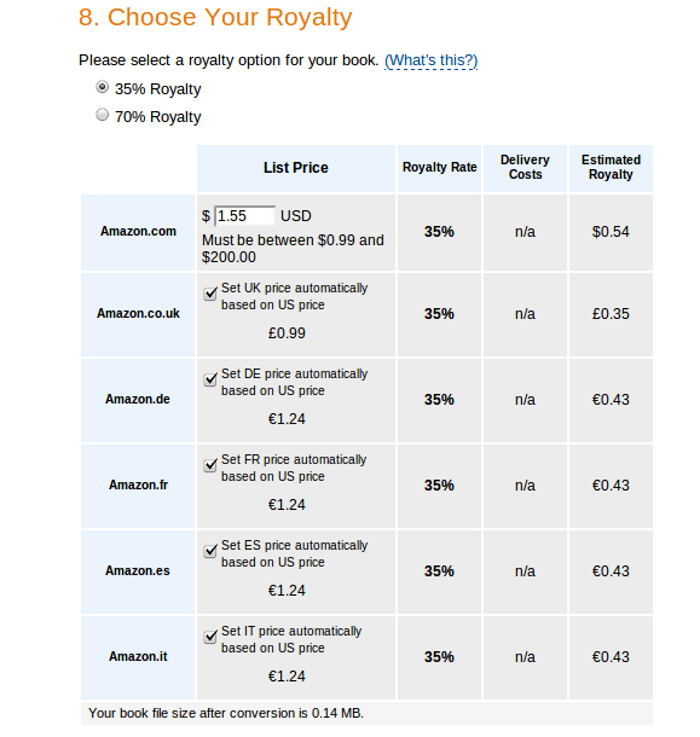 This screen shot shows the figures for the lower priced option.
This screen shot shows the figures for the lower priced option.
Remember at this price Amazon is paying out just 35% royalty. This means for every book we sell we make $0.54.
So…
- 50 sales would bring $27
- 100 sales would bring $54
- 250 sales would bring $135
- 500 sales would bring $270
Higher Price
The suggested sale price here was $2.99 and at 70% royalty this means we would make $2.08 per book.
So…
- 50 sales would bring $104
- 100 sales would bring $208
- 250 sales would bring $520
- 500 sales would bring $1040
The Decision
We knew from the start that the writers and contributors for the book would promote the book. This meant that even with modest sales, we would expect to sell a minimum of about 150 books.
These sales would be independent of the book’s price, since we would be able to sell on the back of the book’s story (charity book).
This all said, two big factors screamed out to be taken into consideration:
1. New readers: We knew that readers who were aware of our story (charity book), and had been part of the journey, would buy at either price. However, we were also aware that having 90 writers promoting the book would mean that we would get the book in front of thousands of people, and the lower the price, the more of these people that would buy. The more that bought the book, the higher up the charts the book would climb and the more it would be recommended by Amazon’s system.
2. Profile: One in Four had told us that raised profile was, in many ways, more important than sales. We therefore knew that a lower price meant more sales and higher profile for the charity.
To be honest by the time we had gotten to this point, we had thrashed out the options time and time again. We spun in circles, first deciding on one price and then doubling back and changing to the other price.
We knew the pros and cons for each situation, but we kept coming back to the same key issues.
Low price meant more sales and better profile for One in Four, but significantly less short term money.
Higher price meant lower sales, less chance of being picked up by Amazon’s system, but more short term profit.
Lost, we turned to Scott Pack from The Friday Project
The Middle Ground
Scott Pack is one of those publishers that simply ‘gets’ the digital side of publishing. He is responsible for a number of Kindle bestsellers and provides HarperCollins with essential insight on the digital market.
So what was his advice?
Well, it was a middle ground.
He suggested that we price at the lower tier for a week and then lift to the higher tier. He suggested we made this clear to the reader, therefore adding a layer of urgency into the mix.
His rationale was that by doing this we would get the best of both worlds. We would have the peak in early sales (and resultant higher ranking), but then be able to make money on the long tail of sales in the coming months and years.
Early Sales
As you can see early sales were good. We had set a figure of 250 sales as our success figure. In short, this was the number of sales we felt the book would make if it was doing well. Anything more would be a bonus.
We hit the 250 sales mark on the second day.
One other important factor that the screen shot highlights, is that the book was ranking high in both Short Stories and Anthologies. A situation we hoped would trigger Amazon’s recommendation engine.
What We Learned About Ebook Pricing
So what did we learn?
In writing this post I have spent a significant amount of time assessing what we have learned from the experience so far. I was aware from the start that since we had access to writers, publishers and even agents, our decision making process would be better informed than most writers in the same situation.
I therefore felt it was important that we distilled our experience to provide you with a set of insights that will allow you to make an informed choice when pricing your books.
- Set a target for success: From the start we set a figure of 250 sales as our ‘success figure’. We postulated that if all of our predictions where correct, then we should be able to sell this many books. Don’t get me wrong this is not the amount of books we want to sell, instead it was the figure that marked the project a success. It is essential you set this before you start. It is also essential that you fix a figure that is both realistic and a fair reflection of your potential market.
- The first few days are critical: It is vital that you have everything in place and ready to go at the day of launch. As it turned out the day prior to publication was organized chaos, as Caroline tried to marshal all of the writers who had said they would blog. One good example of how things can go off kilter was the fact that Amazon publishing is not instantaneous. In fact, you may have to wait 12 hours before your book is up for sale. The problem this presented was that without an Amazon URL we had nowhere to send potential buyers. A situation that was amplified by all the bloggers that where begging for such an URL. The last thing you want is people going to your Amazon page and not being able to buy the book!
- Have one place to go: This is an extension of the last point. In the melee of the opening days of sale it is essential you have a super clear message for potential readers. You need to have one clearly defined place where you can send readers. For us this was Amazon. This meant that everyone was passing on the same crystal clear message. We do intend to expand the places the book can be bought in the coming months, but in the opening days this was seen as an unwanted distraction.
- Pricing is not simple: The final lesson is that ebook pricing is not easy. There is no one formula and there is no one ‘correct’ price. The price you opt to pick for your book will be based on multiple factors. Profit is one of these factors but there are many more. It is therefore essential that you are linking pricing with your wider goals. You can use pricing to alter the way the book is sold and perceived. It is essential that this matches your wider view for the book and your writing career. In short, make sure your price is in line with your wider vision for your book and your career.
Ebook Pricing Conclusion
To be honest, I always knew ebook pricing was complex. I speak to writers on a daily basis and we often discuss the issues behind price. However, until I had worked through this exercise I had not realized just how complex it could be.
So this brings me to the ebook pricing secret that will help you price your book correctly…
What I want you to take away is that your book is unique and the pricing you pick is based on your own goals.
I know this sounds simple, but take a moment to consider what I am saying…
Many writers will tell you $0.99 is the right price. Others will tell you that you are stupid to not sell at $9.99. The real answer is that they don’t know.
The ebook price you finally pick will be based on what is best for your book, you and your career.
So… When pricing your book, consider the following questions:
- How important is overall profit? In other words, are you looking to maximize for profit or other factors, such as sales?
- Is maximizing sales important? By this I mean, are the number of books you sell (and potentially your position in the charts) more important than the overall profit?
- What is the average price of the books in your genre’s top ten? Look at this closely, it may set boundaries to your pricing that you would not have otherwise seen.
- Will readers come to the book unknown, or will you have a chance to tell a marketing story? For some books the reader is closely linked to the writers. For some niche titles the market may be small and aware of the book’s wider story. In this case a higher pricing may be suitable. Alternatively, potential readers may be coming to the book cold (most often for fiction) and in these situations lower pricing may be a benefit.
- Does the book offer value beyond the text (mainly non-fiction)? If your book is teaching you a methodology that will allow you to generate $1000 a month in additional income, the price of that book is almost limitless. The information has a value beyond the book. However, with fiction, this is not the case. Fiction is a luxury item and is therefore more likely to sell well at a lower price.
- What will the price say to the reader? For some books a lower price is damaging. Let’s say you were selling your book to make $1000 a month for $0.99, what is that saying to the reader?
- Is the book a stand-alone or will you be using the book to sell other stuff? This is known as up selling. Say you have a business providing advice to promote businesses using the internet. However, your company provides a service that makes websites for clients. You could give the book away, knowing that a percentage of the readers would come back to you to buy services, which you can sell for significantly more than a book.
- It is part of a series? There is a growing amount of evidence, from self-published writers, that when selling a series it works well to keep the first book as cheap as possible and then sell the additional books in the series for a higher price.
- Do you, as a writer, add to the price? If you are J.K. Rowling then I suggest you don’t sell your next eBook for $0.99. The reason being that people will pay more, just because you are J.K. Rowling (bad example I know, since she just set up her own digital publishing house). Though you are probably not J.K. you might be internet famous, or even just famous in your niche. If this is the case, your fans may well pay more.
- Does your book’s story add value? By this I don’t mean your book’s narrative, but the story surrounding your book. In the case of 100 RPM, the fact that it was a book with 100% of the income going to charity influenced the pricing.
This has been our experience and I hope that it has provided you with some real value. I have worked hard to try and tease out the lessons I felt would give you the best chance of pricing your book correctly.
If you have taken something away from this can I ask that you do two things?
1. Buy 100 RPM (UK LINK | US LINK).
2. Leave a comment and share your insights on eBook pricing.
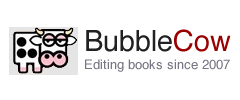
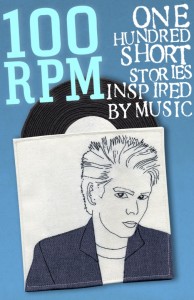
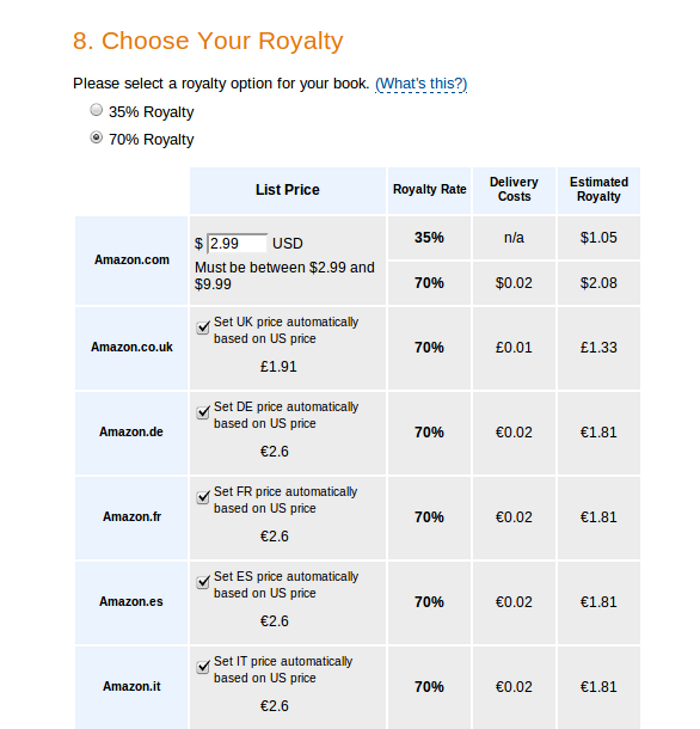
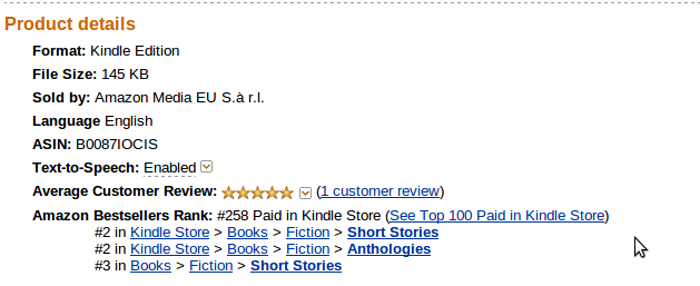
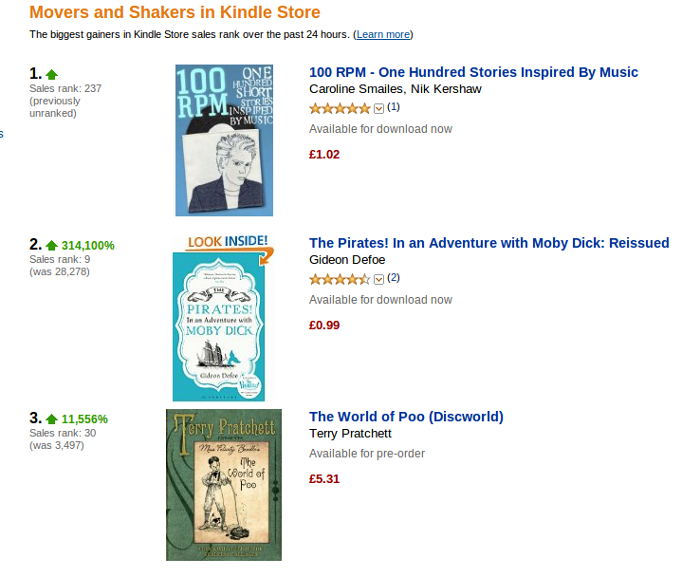
Apr 2013